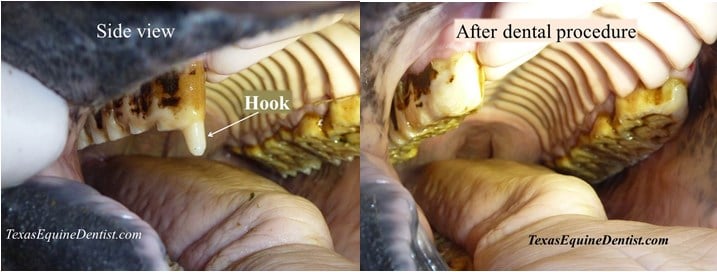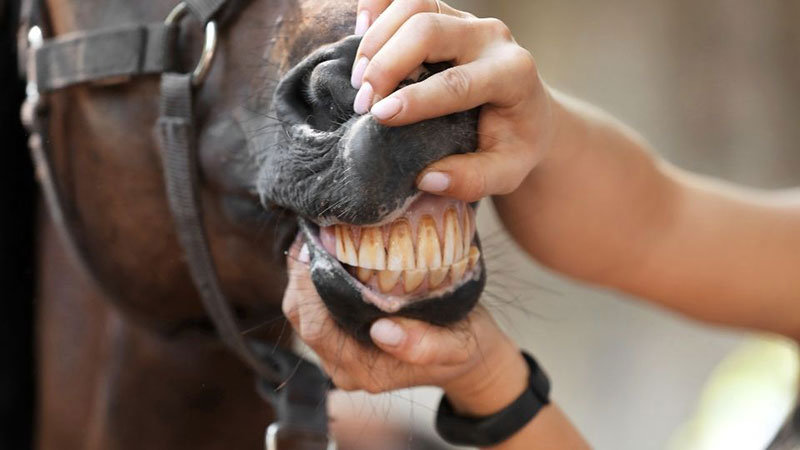A guide to equine dental care
A look into the past
Around 18 million years ago the teeth of the ancient horse began to change due to diet change.
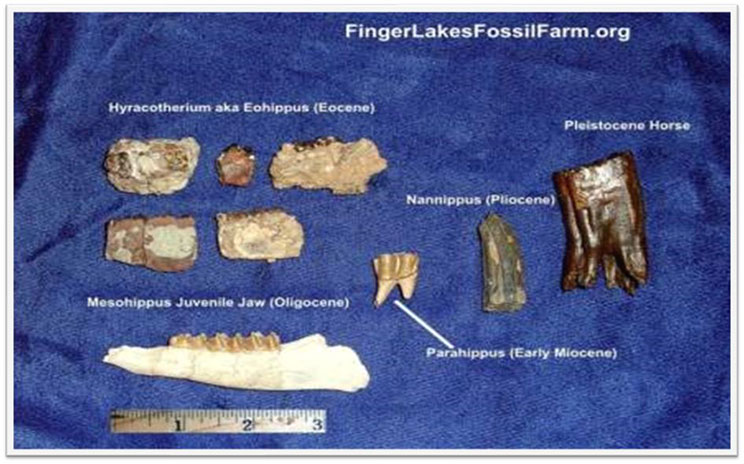
The early horse was a browser and lived in the forest. As the environment changed from leaves to grass and from forest to plains, the horses’ teeth evolved.
The surface of their molars became more complex and better suited for chewing tough plants, particularly grasses, which contain silica particles that wear down teeth.
The tooth height began to increase, and the horse eye had to migrate further back on the skull to accommodate the length of the teeth.
Past to present
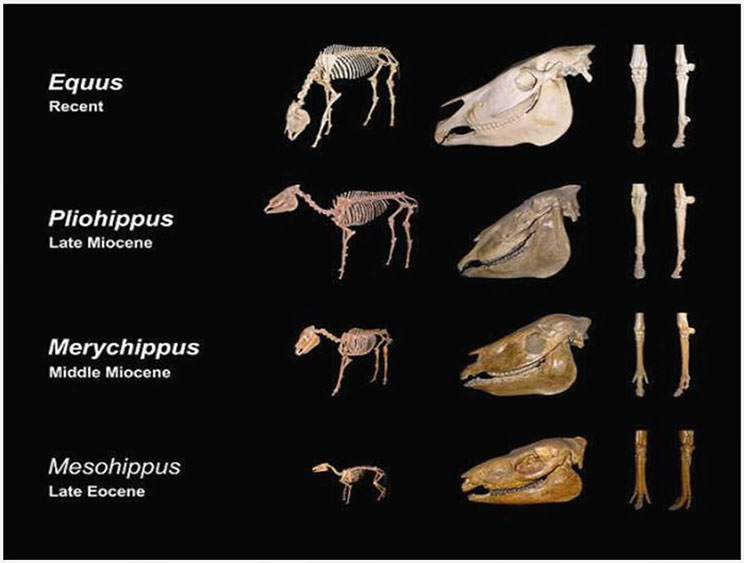
As the horse diet changed, the structure of the skull and eye changed. This movement of the eye from the center of the skull allowed the horse teeth to become long and fit for grazing.
Diet
Horses have evolved to graze grass over 14 hours daily!
- They need to graze this much to wear their continually erupting teeth as they chew. However, since domestication and use the horse often does not attain ideal unlimited grazing.
- Thus, routine dental care is needed to maintain a constant crown height, and to balance any sharp points that develop on the teeth.
Anatomy of a horse mouth
At 5 years of age a horse has between 36-44 teeth.
All horses have:
- 12 Premolars
- 12 Molars
- 12 Incisors (front teeth)
A Horse MAY have:
- 4-5 canine teeth
- 0-4 wolf teeth
Horse teeth have enamel throughout and continuously erupt, unlike human teeth which are coated with enamel and erupt to a predetermined height and stop growing. The anatomy of horse teeth allows them to graze.
Why is dentistry needed?
Horses chew in a lateral circular motion. While horses rarely have problems with tooth decay or gum disease, their continuously erupting teeth present unique problems. If a tooth is lost or worn abnormally, the opposing tooth will continue to erupt from the gum line.
This will cause abnormal chewing patterns and mouth pain. Leading to a decrease in feed efficiency and performance.
Chewing and grinding of feed are essential to your horse’s health and survival. Proper dental care will help your horse eat better, be healthier, and have fewer mouth problems.
Horse skull with extra molar
This horse skull shows the unopposed growth of a molar. (This horse had one extra molar, causing the left side of the mouth to be very sharp.) All chewing took place on the right side of the animals mouth.
Top 7 reasons horses need dental care!
- Horse teeth erupt throughout the life of a horse.
- The horse’s upper jaw is 30% wider than the lower jaw.
- The horse diet is mainly roughage, so horses need teeth of an even height.
- Incisors do not wear at the same rate as molars.
- Early or late tooth eruption causes an uneven chewing surface, which becomes exaggerated over time.
- Tall, sharp canine teeth can pinch or cut the tongue
- Horses chew in a circular type pattern.
Inside a horse mouth
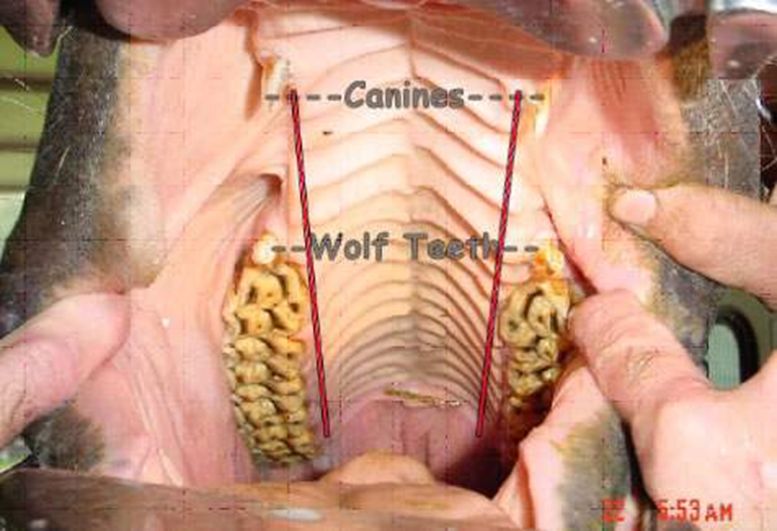
Never insert your hands into the back of a horse’s mouth without the
horse being properly restrained. Use proper equipment, such as
a mouth speculum!
The dental exam
The veterinarian will begin by examining the horses mouth for odor, inflammation, ulcers, cuts, tooth decay, and abnormalities of wear.
Sedation is commonly used to make the procedure easier and provide relaxation to keep the horse quiet and still. It should ONLY be administered by a licensed veterinarian.
Then a speculum, which is a type of brace, is used to keep the mouth open during the exam.
The speculum is not painful to the horse, and provides a better view into the mouth for the veterinarian. It also prevents injuries to the veterinarian and horse.
The veterinarian “floats” the teeth to eliminate long and sharp points that can lacerate the tongue and cheeks.
- Float – Means to level or equalize
- Veterinarians will use a power float that looks like a drill with a flat headed attachment. This grinds down the sharp points on the teeth to make a smooth level chewing surface.
After floating the veterinarian will check the incisor contact, making sure that they “slide” against one another and their surface angle follows the molar line.
How often should a horse’s teeth be floated?
Until all permanent teeth have erupted in the horse, it is important that it received 2 dental examinations per year.
This is also true for horses 15 years and older, as they are geriatric and can have numerous dental problems associated with age.
Mature horses, usually 5-14, should have a dental examination once a year.
The effects of floating
